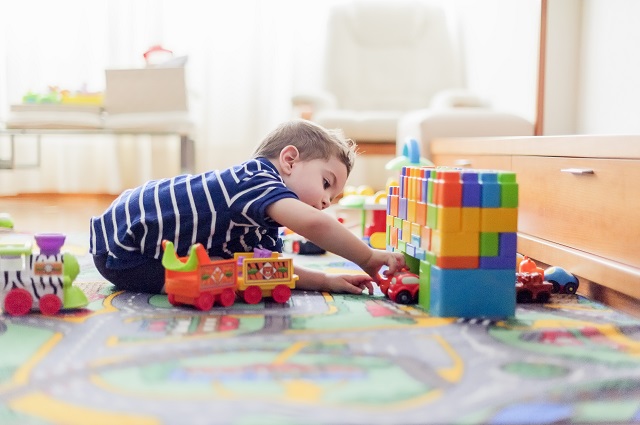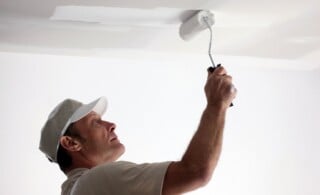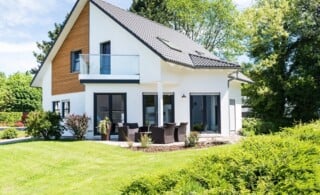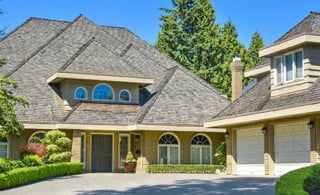 As if parenting in general isn’t challenging enough, parents of children with Autism Spectrum Disorder (ASD) must make every decision with extra care. When it comes to building a playroom, that means each design choice can enhance the many strengths of a child on the spectrum.
As if parenting in general isn’t challenging enough, parents of children with Autism Spectrum Disorder (ASD) must make every decision with extra care. When it comes to building a playroom, that means each design choice can enhance the many strengths of a child on the spectrum.
Whether you are moving to a new home or simply looking to renovate your home, there are plenty of simple, inexpensive ways to ensure their play area is a welcoming environment where they can learn, grow and play without worry or fear. Here are a few tips to get you started.
Playroom Placement
The first step in creating the ultimate playroom is to find the right space. Whether you live in a large home with extra bedrooms or built-in recreational areas; or a smaller home where spare space is limited – it’s worth spending some time planning.
Supervision
When choosing a location for your playroom, start by asking yourself how much supervision your child requires on an average day.
- Younger children require more time and attention; a space near your home office, kitchen or living area will allow you to work, cook or entertain while still being in close to your child.
- Older children may be able to play by themselves for longer intervals, which means hiring a local pro to refinish your basement or renovate your attic into a play area are both suitable options.
Stimulation
Because children with ASD commonly have trouble sleeping, most experts advise against a joined bedroom and play area. Getting a good sleep is important for children, and a room filled with toys, games and other stimuli may make your child restless.
Unfortunately, a separate play area is not always in the blueprints. One way to minimize the impact of a shared space on sleep is to create zones in your child’s room, allowing your child to more easily differentiate between rest and play.
Hazards
Some areas of the home present more hazards than others. Young children, as well as children who struggle with meltdowns, self-injury, or executive function, may be at more risk in certain areas of the home. For example, open floor plans, dining rooms or dens may not have doors or barriers to other areas of the home. This can be dangerous for children who don’t yet understand the dangers of hot stoves, climbing on furniture or going outdoors without an adult. Choose an area in your home and get started childproofing.
Setup
Once you’ve found the perfect space for your child it’s time to decorate, organize and equip your playroom. While all children benefit from structure, organization and stimulation, children with ASD are particularly sensitive to these features. With the proper knowledge and planning you can create the ideal space for your child to thrive.
Decor
When it comes to autism, sensory stimulation is key.
- Use calm, cool colors that are not too bright or harsh.
- Avoid fluorescent lighting, as the flickers and humming can be hard to bear. Instead, use dimmable lighting that can be adjusted as needed.
- Cover windows with adjustable shades.
- Minimize ambient noise with carpet or a rug, acoustic ceiling tiles or even find the cost of soundproofing the room completely.
Organization
Organization is key for children on the autism spectrum because it helps create structure and routine, which helps them feel safe and in control. When organizing a child’s space with ASD, you should focus on alleviating stress and anxiety.
- Store toys in clear bins and label them with pictures
- Always put away items in the same place to give your child consistency
- Split up the room into different play zones with mats or rugs
- Separate different activities into the sections to create play spaces
Equipment
The best environment for a child with ASD is a sensory-friendly one. Whether your child is hypersensitive, sensory seeking or a combination of the two – a room where they can touch everything and move freely is a welcome relief.
Tactile and mobile activities that will keep your child engaged:
- Rice bins
- DIY sensory boards with latches and locks
- Furnishings in a variety of textures
- Rockers
- Swings
- Ball pit
- Mini trampoline
Having play equipment such as trampolines allows your child to get enough physical activity. You should also remove any items that aren’t child-friendly such as adult exercise equipment (think weights or treadmills).
When you have a child with special needs can be overwhelming, but the reward of creating a space for them isn’t limited to the child. Remember that the ultimate playroom for a child with autism is simply one where your entire family can come together to relax and play.
 Build Your Own Home From Around the World
Build Your Own Home From Around the World  Why Business is Booming for Mechanical Contractors, and What That Means for Home Improvement
Why Business is Booming for Mechanical Contractors, and What That Means for Home Improvement  How to Paint a Ceiling – Tips & Best Practices
How to Paint a Ceiling – Tips & Best Practices  Famous Architectural Structures, Buildings, and Designs Throughout the World
Famous Architectural Structures, Buildings, and Designs Throughout the World  Home Sales Decline Amid High Prices and Low Supply
Home Sales Decline Amid High Prices and Low Supply 

Are You Familiar With This Topic? Share Your Experience.